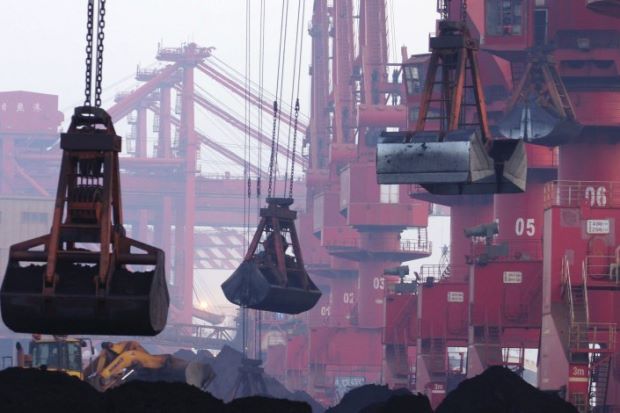The current high iron ore prices are expected to fall after China's steel production peaks this year. However, there is positive news for mining companies, which is that the decline in production of the world's largest producer is likely to be gradual.
China will produce 940 million tonnes of steel in 2019, up from 928 million last year, the Australian government said in its latest quarterly forecast released on Monday.
This year is likely to be the last record year for Chinese steel production, as Australia's Ministry of Industry, Innovation and Science predicts production will drop to 930 million tonnes in 2020 and 926 million a year later.
While the likelihood of passing a peak in China's steel production sounds somewhat ominous for iron ore producers, the forecast also says that global steel production will remain largely unchanged with 1,805 million tonnes expected this year, in 2006 - 1 806 million, and in 2021 - 1 808 million.
A slight decrease in production in China is offset by an increase in production in India: 114 million tons are expected this year, and up to 130 million by 2021.
This stable outlook for global steel production is actually positive news for iron ore producers as it means continued demand for their products at current high levels.
The Australian government expects the iron ore market to return to equilibrium by next year as production in Brazil, the world's second largest exporter after Australia, will recover.
Global iron ore trade is expected to decline 4 percent in 2019 to 1.53 billion tonnes as Brazilian issues and weather events in Australia take their toll.
Rational price
The sea supply deficit has been positive for prices and average iron ore prices are projected to average $ 81.10 per tonne in 2019, up sharply from $ 62.60 last year. However, a return to Brazilian production and increased production in Australia will push the average price down to $ 61.40 per tonne in 2020 and $ 57.50 in 2021.
The Australian Government is forecasting spot market prices, pick-up from Australia, while current market benchmarks are for prices shipped to China.
Even with transportation costs around US $ 7 per tonne, if Australian forecasts are confirmed, this would be a significant decline from the current price of 62% iron ore in China, which is estimated at Monday $ 123.65 per ton.
This price remains the highest since January 2014, and quotes are up 64 percent since the Brazil disaster. This may indicate a price bubble, and it is only a matter of time before the return of the offer and prices will decline.
The presence of a bubble makes the recovery in Brazilian exports critical to prices, and shipping and port data compiled by Refinitiv indicate that supply stabilization is under way.
Brazil shipped 30.63 million tonnes in June, according to data that has been filtered to show only ships currently on board and those already unloading or awaiting loading. This is up from 28.3 million tons in May and significantly higher than 17.2 and 23.7 million tons in April and March, respectively.
June's figure was on par with the 30.1 million tonnes exported in January last month before the impact of the dam failure, but still below the 35.9 million shipped in December.
This shows that Brazilian exports still have the potential to increase from current levels, and until they do so, miners can expect the price of ore to increase in the current period.





